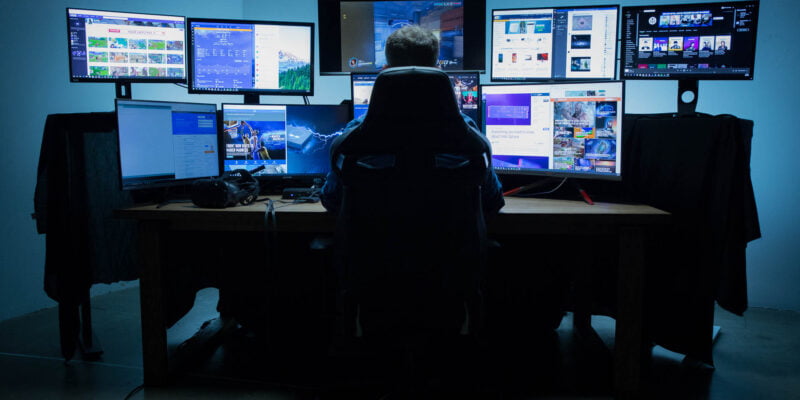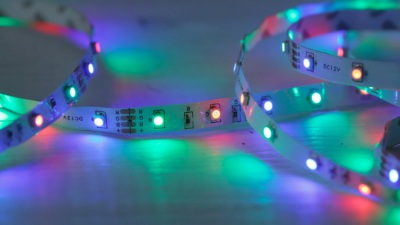Finding the right monitor can be tricky, especially if you’re looking to use it in conjunction with gaming systems or consoles. Whether you’re buying an affordable option or something more advanced, there are plenty of factors that you should consider before pulling the trigger on your monitor purchase.
If you’re into gaming, you should know how crucial it is to have a good monitor. The two biggest considerations for gamers are response time and refresh rate. In general, if you can afford a 240Hz monitor and your computer can run games at that rate we highly recommend getting one. Here are just a few things to think about before you buy monitors and gaming monitors online.
Do I need an Ultra-Wide or Super Widescreen Monitor?
If you do graphic design or programming and you’re worried about running out of room on your current monitor, then an ultra-wide or super widescreen monitor is probably best for you. These monitors are huge – that’s literally their appeal. The problem with these types of monitors is that they’re really only good for one thing: being big. They don’t actually have a higher resolution than more traditional monitors so they won’t make anything easier to read; rather, they just have more space to fit everything on screen at once. If you don’t mind editing spreadsheets in two windows side by side, then it might be worth getting an extra-wide monitor instead (look for a ratio of 21:9).
How Important is Pixels Per Inch (PPI)
Monitors are rated by pixels per inch (PPI), which refers to how many pixels can be displayed on a single inch of screen. A higher PPI means that more content can be viewed without reloading and requires less scrolling when moving from one page to another. In most cases, graphics professionals should look for monitors with at least 160 PPI, while average users will likely do just fine with something in the range of 100–120 PPI. In terms of gaming monitors, however, things get a bit more complicated: Gamers need extra-large screens with high refresh rates—at least 144Hz in most cases—to make sure they aren’t being left behind by faster-moving rivals.
Monitor Resolution: What’s the Difference Between 720p, 1080p, 1440p, and 4K?
Monitor resolution refers to how many pixels a monitor can display. The higher that number, generally speaking, the sharper and clearer an image will appear. In order to achieve 4K resolution, you need to have a display that’s capable of displaying at least 8 million pixels. That’s four times more than what you get with 1080p Full HD or 2K monitors—and four times more than 720p monitors as well. It all boils down to how many pixels are packed into one square inch of your screen: on a 4K monitor, that number is close to 9 million; on most HD monitors it’s around 216 PPI (or pixels per inch), and it’s just 72 PPI on older monitors like the 720p variety.
Do I Need a G-Sync/FreeSync Monitor?
If you’re looking to step up your PC gaming experience and enjoy smooth gameplay with no tearing or stuttering, it might be time to buy a monitor that supports Nvidia G-Sync or AMD FreeSync. These two technologies eliminate screen tearing—which occurs when your graphics card output doesn’t match your monitor refresh rate—and enable buttery-smooth frame rates by syncing display refresh rates with GPU output. This seamless transition between frames increases in-game fluidity significantly and reduces input lag, which can give gamers an edge when playing competitive multiplayer games. If you want to get a jump start on building a killer gaming rig, check out our recommendations for every budget.
Do I need an HDR monitor?
If you’re looking to maximize your productivity, it is important to make sure that you have a top-of-the-line monitor. If a monitor isn’t fit for its job, then it won’t be able to help you with your daily tasks in any way. In fact, if a screen can’t do its job properly then it might even hinder your ability to get things done! Don’t let that happen—make sure you know how and when to buy gaming monitors and general monitors.
How Should I Position My Monitors?
Do you look at your monitor straight on or do you tilt it a little? Do you swivel it side to side? While there’s no right answer, studies have shown that positioning your monitors so they’re directly in front of you will have a positive impact on your eyes. In fact, one study found that applications requiring high concentration may benefit from having more than one monitor aligned in front of them. Ideally, when your eyes are looking at a monitor, they should be able to rest with their gaze relatively straight ahead. Positioning is also important because it can affect how comfortable (or uncomfortable) and productive you are while working.
How Can I Maximize Productivity?
There are many aspects to consider when looking at computer monitors. Monitors range in price, size, and features and it’s important to consider your needs before making a purchase. The average monitor sold costs anywhere from $80-$500 and comes with standard features such as HDMI ports and USB plugs, but monitors can offer much more for an additional cost. When looking for a monitor there are two main questions you should ask yourself: what do I want to use my monitor for? What kind of experience do I want when using my computer?
How To Get The Most Value From Your Gaming Monitor or Computer Monitor
Gaming monitors come in many different shapes and sizes. They range from old-school cathode ray tube (CRT) displays to larger, high-resolution flatscreen monitors and even curved or ultra-wide models. When you’re looking at gaming monitors, you want to find one that fits your needs. Be sure to figure out what type of connection and features you need before diving into your research. That way, you won’t end up with a monitor that won’t be worth your money or time. Many professional gamers use curved or ultra-wide screens due to their size, while others may prefer a smaller but higher resolution monitor that they can use for both works and play.
Conclusion
There’s no single monitor that’s right for every person, but there are a few things to look for. If you want your monitor to serve as more than just an extension of your PC—if you want it to also be an entertainment centre or a productivity machine—you should consider getting one with extra features like picture-in-picture and built-in speakers.













Comments